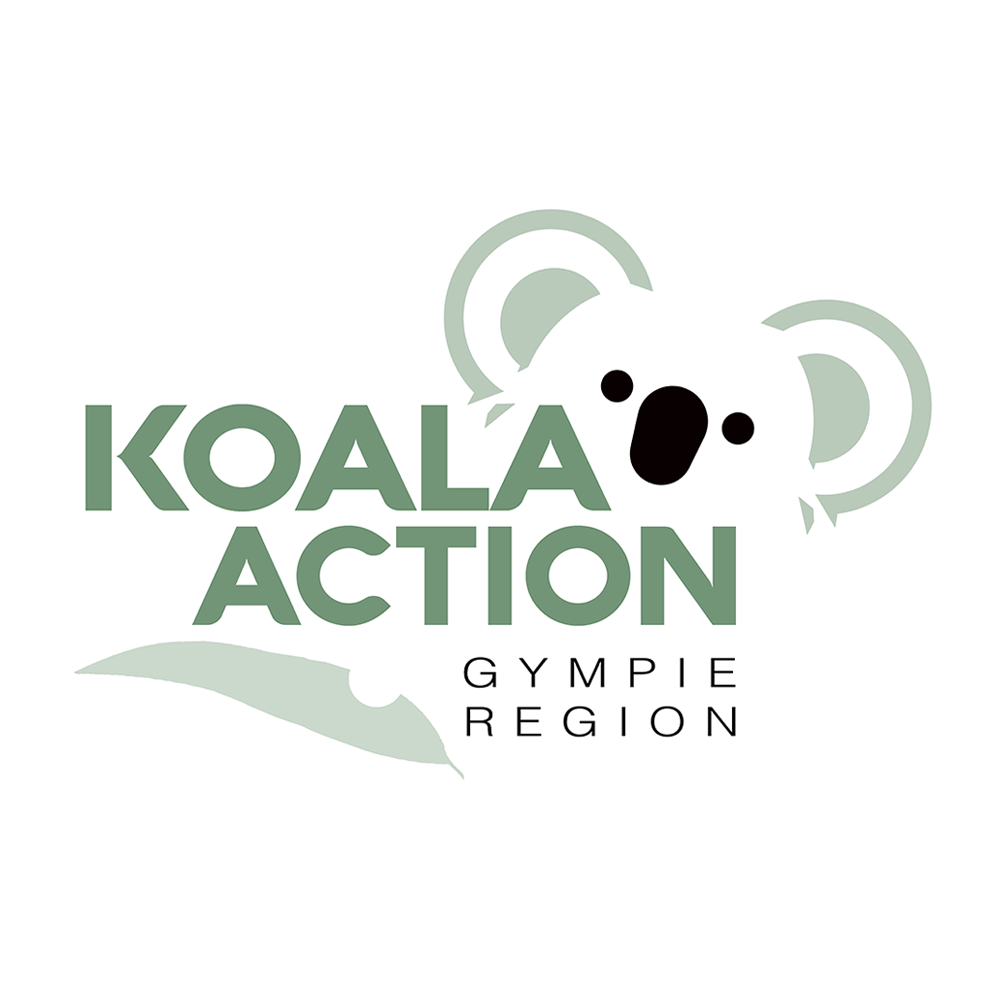About Koalas
The koala (Phascolarctos cinereus) is an arboreal herbivorous marsupial native to Australia. It is the only extant representative of the family Phascolarctidae and its closest living relatives are the wombats, which comprise the family Vombatidae. The koala is found in coastal areas of the mainland’s eastern and southern regions, inhabiting Queensland, New South Wales, Victoria, and South Australia. It is easily recognisable by its stout, tailless body and large head with round, fluffy ears and large, spoon-shaped nose.
The koala has a body length of 60–85 cm and weighs 4–15 kg. Fur colour ranges from silver grey to chocolate brown. Koalas from the northern populations are typically smaller and lighter in colour than their counterparts further south. These populations possibly are separate subspecies, but this is disputed.
A koala in the wild will live for approximately 8 -10 years; however the average life span is often significantly reduced in suburban areas due to increased threats such as disease, loss of habitat, dogs, traffic and swimming pools.
Koalas typically inhabit open eucalypt woodlands, and the leaves of these trees make up most of their diet. Because this eucalypt diet has limited nutritional and caloric content, koalas are largely sedentary and sleep up to 20 hours a day.
Breeding
The breeding season is generally from August to December. Females are sexually mature at approximately two years of age and males from three years. Females can produce one young per year, and although rare, they have been known to give birth to twins.
Gestation lasts 35 days before the joey is born which is only 2cm in length and are totally hairless, without ears and are blind. After birth, the joey makes its way to the mother’s pouch where it attaches itself to one of her two teats.
The joey first emerges from the pouch after five to six months. Before the joey can eat gum leaves, the mother produces a special form of faeces, called pap. The joey must eat the pap because it provides the important gut bacteria necessary to digest eucalypt leaves.
They are asocial animals, and bonding exists only between mothers and dependent offspring. Adult males communicate with loud bellows that intimidate rivals and attract mates. Males mark their presence with secretions from scent glands located on their chests. Being marsupials, koalas give birth to underdeveloped young that crawl into their mothers’ pouches, where they stay for the first six to seven months of their lives. These young koalas, known as joeys, are fully weaned around a year old. Koalas have few natural predators and parasites, but are threatened by various pathogens, such as Chlamydiaceae bacteria and the koala retrovirus.
Koala Life Cycle
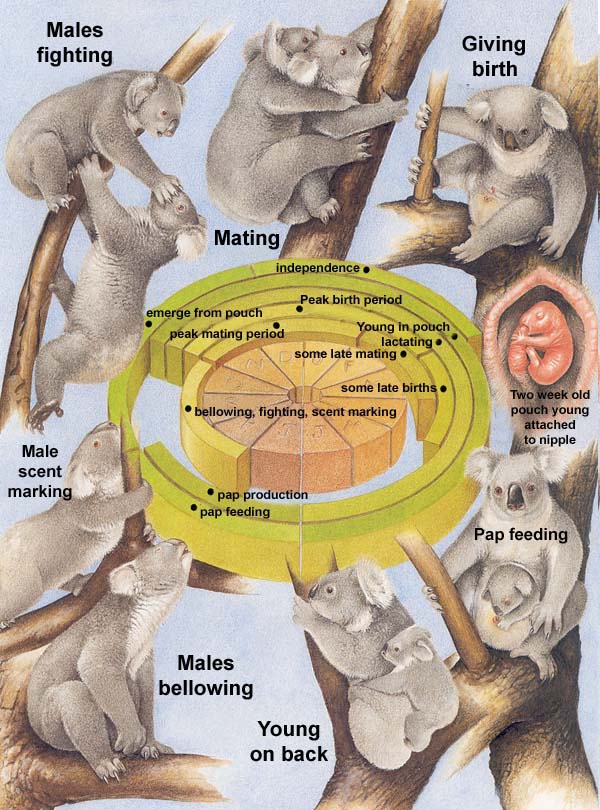
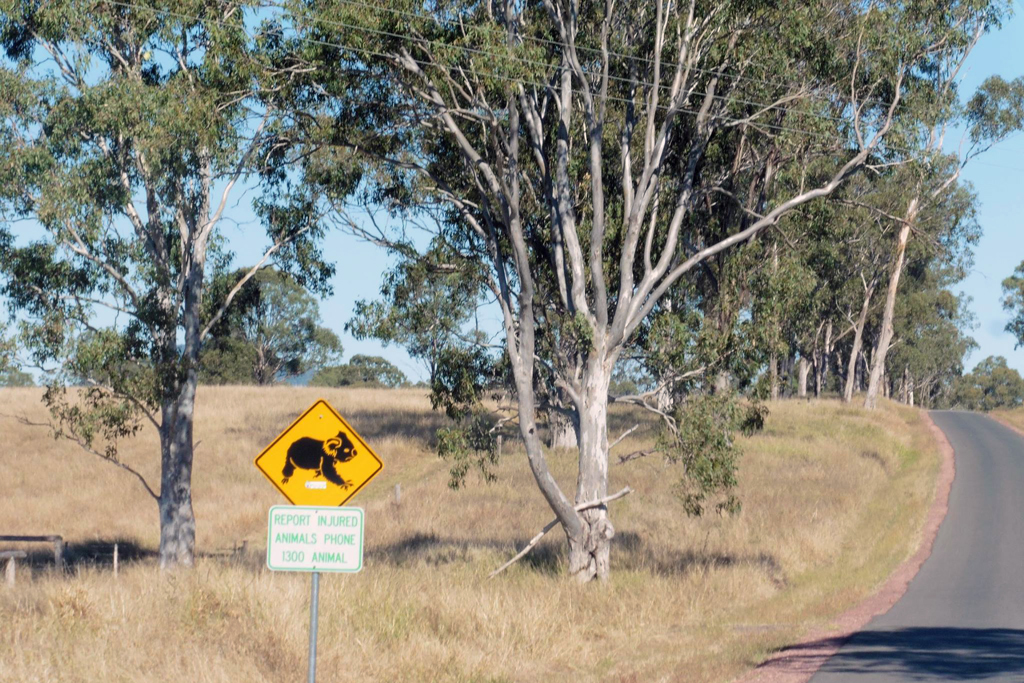
Major Dangers Facing Koalas
- Koalas cross our roads– see our guide below
- Koalas and domestic dogs
- Koalas and fencing – See our guidelines below
- Habitat Loss
- Disease
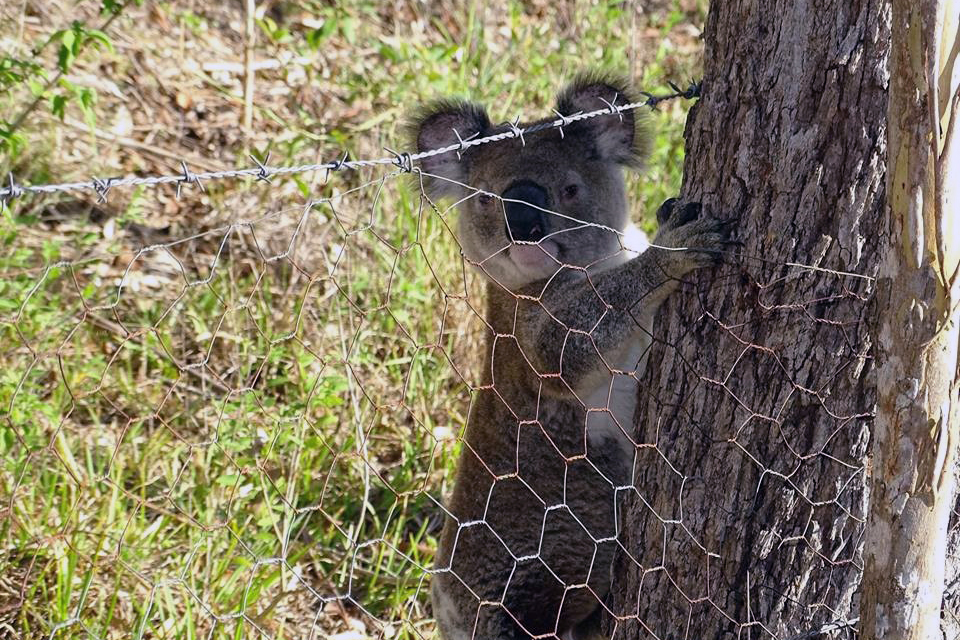
Fencing
Is your fencing in a koala habitat area suitable for koalas to move safely and freely in their home range, to disperse and to breed.
Koalas need:
- A 30cm gap between ground level and the first rail or strand (which most of our local 3 strand fencing is) *
- If mesh fencing is used (and there is no 30cm gap at the bottom the koala can go under) place a pole/plank against fence at a 45 degree angle between two supporting upright poles (this also allows escape for koalas cornered by livestock in paddocks).
- We need local knowledge and feedback re fencing impacts, and inventive ways to ensure koala safe movement where mesh fencing is used.
- House yard fencing needs to keep dogs inside ensuring their safety and that of wildlife on the property. Fencing that keeps dogs and a koala apart is critical in koala habitat areas.
Please remember barbed wire is a problem for many species that get entangled especially in the top rung.
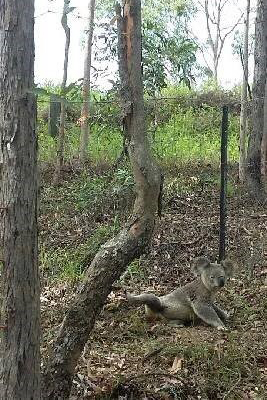
Driving
KOALA AWARE DRIVING
koalas can cross the roads any time of the day or night but more likely at dusk and dawn, when they are moving from food trees to habitat trees and vice versa.
To avoid hitting a koala:
- Drive more slowly when koalas are active and crossing roads (from dusk until early morning).
- Stay alert and scan the roadside for wildlife movement especially where there are roadside trees or bushland
- Passengers can help with ‘wildlife watching’
- Be aware of koala warning signs to indicate koala living
- Avoid swerving and brake gradually
IF YOU SEE A KOALA CROSSING
Slow down and allow it to cross in the direction it wants to go. Do not get too close. Bright car lights can cause a koala to ‘freeze’, if it does, turn off high-beam.
THANK YOU FOR BEING A WILDLIFE AWARE DRIVER.
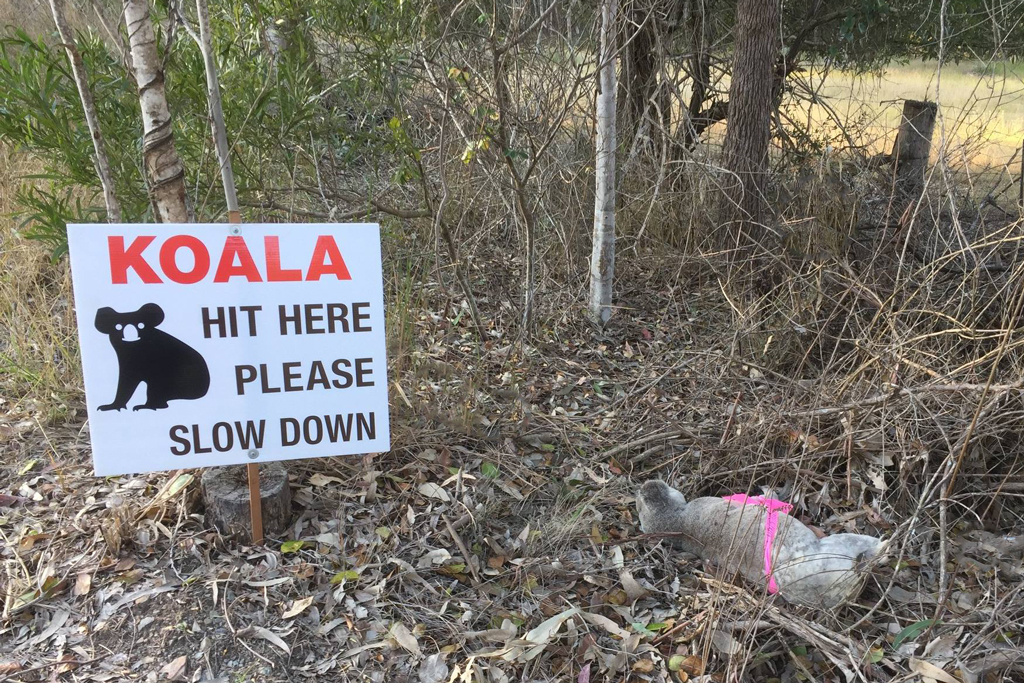
KAGR have glove box brochures available with all the information you need should you hit a koala or come across one that has been injured. CLICK HERE to download and save.
WHO TO CALL
RSPCA: 1300 264 625 (24hr)
ANARRA Gympie Wildlife Hotline: 5343 4859
IF YOU HIT A KOALA or find an injured or dead Koala
STOP…CHECK…CALL
- Pull over safely as soon as possible and put hazard lights on to alert other road users.
- If alive and in danger ON the road,. IF safe to do so (e.g. with a thick blanket or towel) move it off the road to safety and call for assistance.
- Wait with the koala until rescuer arrives. (only restrain it to stop it from escaping up a tree from where it will need rescue.
- If you cannot stay, provide rescuer with exact location; leave a bright marker so koala can be found quickly.
- If dead and IF safe, move it to the side of the road, check pouch (if there is a joey in the pouch, DO NOT REMOVE IT). Call a rescuer will attend to do further checks and gather vital data.
KOALA ACTION GYMPIE REGION INC.
The Koala Action Gympie Region Inc. (KAGR)
Email: president@kagr.org.au
Facebook: @koalagympie
Phone: 0428 865 172
Visit our Facebook page
where we share information about koalas in our region, and local and broader koala conservation issues.
MEMBERSHIP APPLICATION
Membership is free and by becoming a member of KAGR Inc, you will receive regular emails about our activities. By helping our membership to grow you contribute to raising awareness of koalas within our community.
We hold general members meetings on the third Thursday of every month at the Gympie Art Gallery and welcome input from all of our members. Come along and share your interest with like-minded people.
